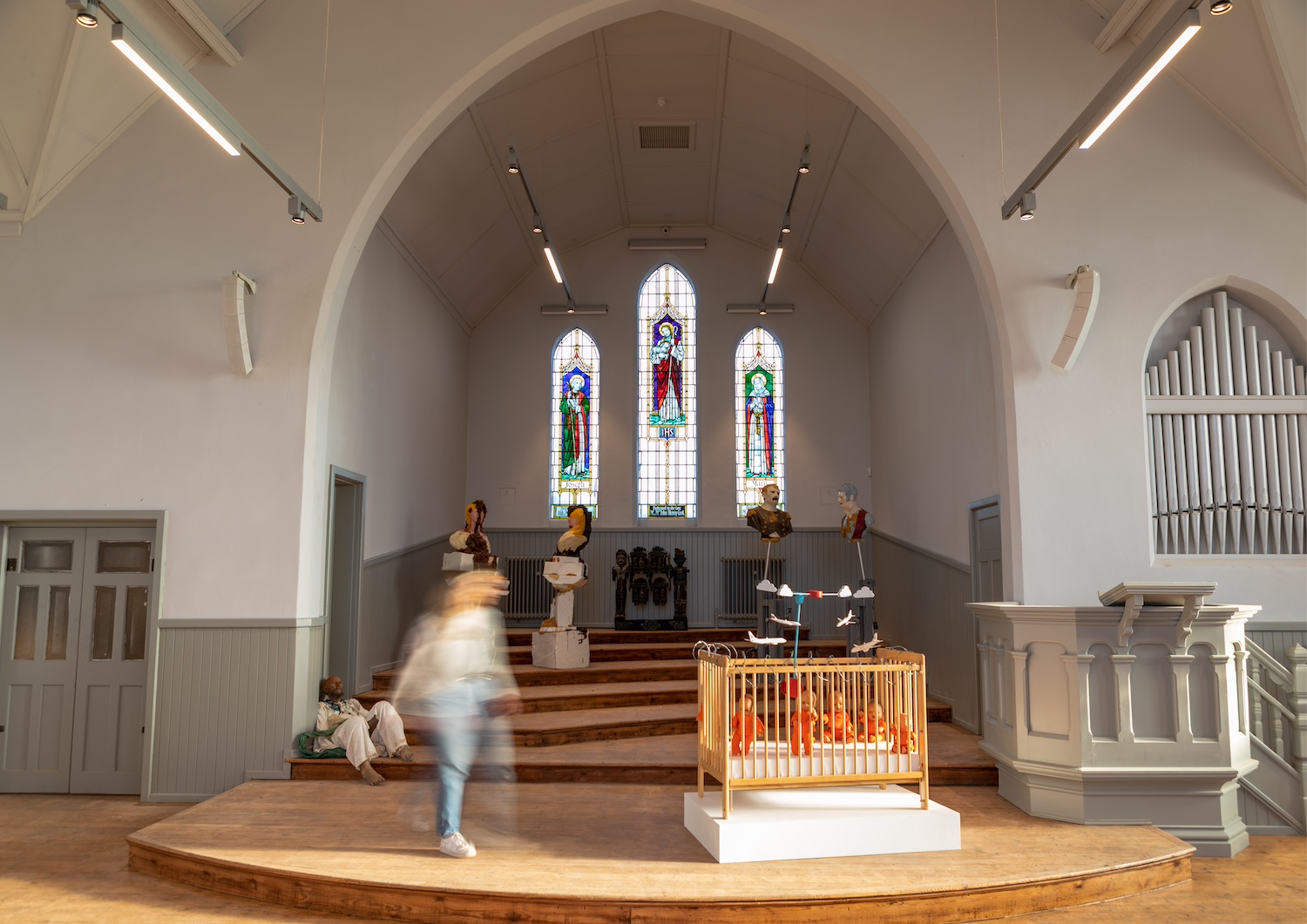Chris Williamson, chairman, WestonWilliamson+Partners on Ilkeston, Derbyshire and how he hopes its rejuvenation can be kick-started.
Ilkeston Contemporary Arts (ILKON). “Ilkon” is Old English for ‘everyone’ and was used by Chaucer in the Second Nun’s Tale about Saint Cecilia, who is depicted in one of the stained-glass windows.
I had a fantastic free education at Ilkeston Grammar School, with inspirational teachers who encouraged and enabled me to go on to study architecture and build a career with Andrew Weston for over 35 years. The school motto was the same as the town’s: Labor Ominia Vincit – ‘work conquers all.’ And yet, whilst I was studying, most of the traditional local industries – the coal mines, the steel works, the Raleigh bicycle factory (the setting for Alan Sillitoe’s wonderful Saturday Night, Sunday Morning) – were shedding staff and disappearing.
Having long settled in London, I picked up a copy of The Independent and saw the headline ‘cracktown’ and a front-page article about Ilkeston; how the town that had formed me had fallen further into neglect; its severe problems with unemployment and all the accompanying ills. Ilkeston had been chosen as an illustration of 20 or 30 other towns in the same circumstances. As well as the loss of industry, Ilkeston has been divided by a relief road, which has speeded up through-traffic at the expense of connectivity, facilitating edge-of-town superstores over the smaller stores around the Market Place.
The railway station closed in 1967, making Ilkeston the largest town in England without one – until 50 years later when a £10m station by Aecom opened on the Leeds-Nottingham line. This created a large catchment area, with connections to several university towns. My career has been centred around the opportunities created by connectivity, of well-designed public transport, so it will be fascinating to see how this new route can be utilised to help reinvigorate Ilkeston.
ILKON is not a made-up word. It’s Old English for ‘everyone’ and was used by Chaucer in the Second Nun’s Tale about Saint Cecilia, who is depicted in one of the beautiful stained-glass windows – this inspired our logo. The stained-glass, together with most of the £13,000 funding for the original church, was donated by local townsfolk in the height of the 1930s depression. How sad that less than 100 years later, it had fallen into disrepair. The local community was delighted that it wasn’t being demolished when our builders started (albeit bemused by the new use) and have taken the venue to their hearts. We have added insulation, solar panels and an air source heat pump to reduce energy consumption and carbon emissions by 75%; a demonstration of how redundant historic buildings can be reimagined to make a lasting contribution.
I saw the headline ‘cracktown’ and a front-page article about Ilkeston; how the town that had formed me had fallen further into neglect”
ILKON’s community café has become a lively gathering place. There’s an education room, named after my art teacher Dr Richard Venning, who taught me to think. We’re working with students from Nottingham Trent University and Erewash Borough Council to study the 15-minute walk from the station, and how it could be more exciting. This may even include a sculpture park, to feature the works by Jamie Fitzpatrick, Leo Fitzmaurice and Tim Etchells in ILKON’s grounds.
Many of our cities, like Manchester, Bristol and Birmingham, have undergone a renaissance and are now thriving. Our towns less so. But often, it takes just one or two venues to start a transformation. I know it can happen and am determined to try. In the summer, I was tired and emotional after a long a day planting outside when a schoolboy asked, “hey, why are you planting dead plants?” I explained they might look dead now, but they would soon spring to life, and hopefully that was a metaphor for the place itself. “We learned about metaphors last week but I don’t think that’s a particularly good one.” As he skipped away, I thought “That was me, 55 years ago – and he’s going to love it here.” It’s only been open for a short time, but he does visit, along with family and friends. The important thing now is to keep it lively and fresh and build on it to revive the pride in this, my kind of town.
Source: Architecture Today



